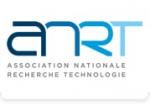Cryptanalyse assistée par attaques physiques pour les schémas basés sur les codes correcteurs d’erreurs // Physical-attack-assisted cryptanalysis for error-correcting code-based schemes
| ABG-134214 | Thesis topic | |
| 2025-11-06 | Public/private mixed funding |
CEA Limoges Laboratoire de Sécurité des COmposants
Grenoble
Cryptanalyse assistée par attaques physiques pour les schémas basés sur les codes correcteurs d’erreurs // Physical-attack-assisted cryptanalysis for error-correcting code-based schemes
- Data science (storage, security, measurement, analysis)
Cybersécurité : hardware et software / Défis technologiques / Informatique et logiciels / Sciences pour l’ingénieur
Topic description
L’évaluation de la sécurité de la cryptographie post-quantique, sous l’angle des attaques physiques, a été particulièrement étudiée dans la littérature, notamment sur les standards ML-KEM, et ML-DSA, basés sur les réseaux euclidiens. De plus, en mars 2025, le schéma HQC, basé sur les codes correcteurs d’erreurs, a été standardisé comme mécanisme d’encapsulation de clé alternatif à ML-KEM. Récemment, les Soft-Analytical Side-Channel Attacks (SASCA) ont été utilisées sur une grande variété d’algorithmes, afin de combiner l’information liée aux variables intermédiaires pour remonter au secret, apportant une forme de « correction » à l’incertitude liée aux attaques profilées. SASCA repose sur des modèles probabilistes appelés « factor graphs », sur lesquels un algorithme de « belief propagation » est appliqué. Dans le cas des attaques sur cryptosystèmes post-quantiques, il est en théorie possible d’utiliser la structure mathématique sous-jacente pour traiter la sortie d’une attaque SASCA sous la forme d’une cryptanalyse. Cela a par exemple été montré sur ML-KEM. L’objectif de cette thèse est de construire une méthodologie et les outils nécessaires de cryptanalyse et de calcul de complexité résiduelle pour la cryptographie basée sur les codes correcteurs d’erreurs. Ces outils devront prendre en compte l’information (« hints ») issue d’une attaque physique. Un second pan de la thèse sera d’étudier l’impact que peut avoir ce type d’outil sur le design de contremesures.
------------------------------------------------------------------------------------------------------------------------------------------------------------------------
------------------------------------------------------------------------------------------------------------------------------------------------------------------------
The security assessment of post-quantum cryptography, from the perspective of physical attacks, has been extensively studied in the literature, particularly with regard to the ML-KEM and ML-DSA standards, which are based on Euclidean lattices. Furthermore, in March 2025, the HQC scheme, based on error-correcting codes, was standardized as an alternative key encapsulation mechanism to ML-KEM. Recently, Soft-Analytical Side-Channel Attacks (SASCA) have been used on a wide variety of algorithms to combine information related to intermediate variables in order to trace back to the secret, providing a form of “correction” to the uncertainty associated with profiled attacks. SASCA is based on probabilistic models called “factor graphs,” to which a “belief propagation” algorithm is applied. In the case of attacks on post-quantum cryptosystems, it is theoretically possible to use the underlying mathematical structure to process the output of a SASCA attack in the form of cryptanalysis. This has been demonstrated, for example, on ML-KEM. The objective of this thesis is to develop a methodology and the necessary tools for cryptanalysis and residual complexity calculation for cryptography based on error-correcting codes. These tools will need to take into account information (“hints”) obtained from a physical attack. A second part of the thesis will be to study the impact that this type of tool can have on the design of countermeasures.
------------------------------------------------------------------------------------------------------------------------------------------------------------------------
------------------------------------------------------------------------------------------------------------------------------------------------------------------------
Pôle fr : Direction de la Recherche Technologique
Pôle en : Technological Research
Département : Département Systèmes (LETI)
Service : Service Sécurité des Systèmes Electroniques et des Composants
Laboratoire : Laboratoire de Sécurité des COmposants
Date de début souhaitée : 01-06-2026
Ecole doctorale : Sciences et Ingénierie des Systèmes, Mathématiques, Informatique (SISMI)
Directeur de thèse : GABORIT Philippe
Organisme : Université de Limoges
Laboratoire : XLIM
URL : http://www.leti-cea.fr/cea-tech/leti/Pages/recherche-appliquee/infrastructures-de-recherche/plateforme-cybersecurite.aspx
------------------------------------------------------------------------------------------------------------------------------------------------------------------------
------------------------------------------------------------------------------------------------------------------------------------------------------------------------
The security assessment of post-quantum cryptography, from the perspective of physical attacks, has been extensively studied in the literature, particularly with regard to the ML-KEM and ML-DSA standards, which are based on Euclidean lattices. Furthermore, in March 2025, the HQC scheme, based on error-correcting codes, was standardized as an alternative key encapsulation mechanism to ML-KEM. Recently, Soft-Analytical Side-Channel Attacks (SASCA) have been used on a wide variety of algorithms to combine information related to intermediate variables in order to trace back to the secret, providing a form of “correction” to the uncertainty associated with profiled attacks. SASCA is based on probabilistic models called “factor graphs,” to which a “belief propagation” algorithm is applied. In the case of attacks on post-quantum cryptosystems, it is theoretically possible to use the underlying mathematical structure to process the output of a SASCA attack in the form of cryptanalysis. This has been demonstrated, for example, on ML-KEM. The objective of this thesis is to develop a methodology and the necessary tools for cryptanalysis and residual complexity calculation for cryptography based on error-correcting codes. These tools will need to take into account information (“hints”) obtained from a physical attack. A second part of the thesis will be to study the impact that this type of tool can have on the design of countermeasures.
------------------------------------------------------------------------------------------------------------------------------------------------------------------------
------------------------------------------------------------------------------------------------------------------------------------------------------------------------
Pôle fr : Direction de la Recherche Technologique
Pôle en : Technological Research
Département : Département Systèmes (LETI)
Service : Service Sécurité des Systèmes Electroniques et des Composants
Laboratoire : Laboratoire de Sécurité des COmposants
Date de début souhaitée : 01-06-2026
Ecole doctorale : Sciences et Ingénierie des Systèmes, Mathématiques, Informatique (SISMI)
Directeur de thèse : GABORIT Philippe
Organisme : Université de Limoges
Laboratoire : XLIM
URL : http://www.leti-cea.fr/cea-tech/leti/Pages/recherche-appliquee/infrastructures-de-recherche/plateforme-cybersecurite.aspx
Funding category
Public/private mixed funding
Funding further details
Presentation of host institution and host laboratory
CEA Limoges Laboratoire de Sécurité des COmposants
Pôle fr : Direction de la Recherche Technologique
Pôle en : Technological Research
Département : Département Systèmes (LETI)
Service : Service Sécurité des Systèmes Electroniques et des Composants
Candidate's profile
Master mathématiques spécialité en cryptographie
Apply
Close
Vous avez déjà un compte ?
Nouvel utilisateur ?
More information about ABG?
Get ABG’s monthly newsletters including news, job offers, grants & fellowships and a selection of relevant events…
Discover our members
 Généthon
Généthon  ONERA - The French Aerospace Lab
ONERA - The French Aerospace Lab  Tecknowmetrix
Tecknowmetrix  Medicen Paris Region
Medicen Paris Region  ASNR - Autorité de sûreté nucléaire et de radioprotection - Siège
ASNR - Autorité de sûreté nucléaire et de radioprotection - Siège  TotalEnergies
TotalEnergies  Servier
Servier  Institut Sup'biotech de Paris
Institut Sup'biotech de Paris  Groupe AFNOR - Association française de normalisation
Groupe AFNOR - Association française de normalisation  Laboratoire National de Métrologie et d'Essais - LNE
Laboratoire National de Métrologie et d'Essais - LNE  Aérocentre, Pôle d'excellence régional
Aérocentre, Pôle d'excellence régional  Nantes Université
Nantes Université  SUEZ
SUEZ  Nokia Bell Labs France
Nokia Bell Labs France  ADEME
ADEME  Ifremer
Ifremer  ANRT
ANRT

